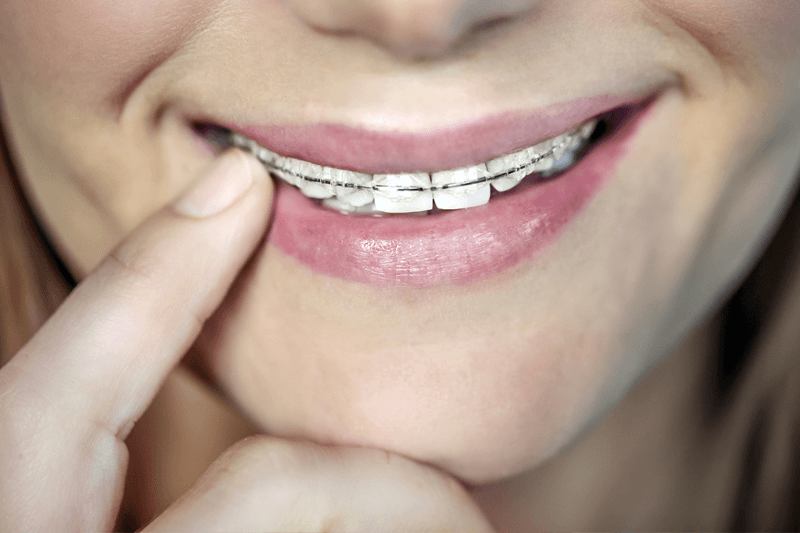
Every day when you brush your teeth, check to make sure you do not have any loose braces by gently trying to slide each one. If a wire or band comes loose, do not be alarmed. If a tie wire is protruding and irritating, use a blunt instrument (the back of a spoon or a pencil eraser) to carefully push the wire out of the way. If you have a broken or loose appliance, please call us to determine if your breakage is urgent and requires immediate repair. If a piece comes loose, save it and bring it with you to the office.
Elastics are essentially rubber bands that are attached to brackets, usually between the upper and lower or front and back teeth, applying tension and causing teeth to move. Elastics can be used in many ways depending upon the treatment goals.
Elastics move the teeth in a direction they could not be moved using braces alone. Your teeth and jaws may be tender during the first few days elastics are worn. This is normal, and the tenderness should begin to disappear within a week. If it persists longer, please call our office. Rinsing with hot salt water will help reduce the tenderness.
Your elastics may be difficult to put on at first, but this will become easier with practice. You may remove them only when eating or brushing your teeth. Leave them in during snacking. Be sure to replace the elastics with new ones immediately after meals and brushing. Part-time wear does NOT move teeth, but it does cause prolonged discomfort.
Change the elastics routinely even if they are not broken. After a while, elastics lose their strength. Change them after each meal and before bedtime. If one elastic breaks, replace both sides.
Carry extra elastics with you at all times. If you don't have enough to last until your next appointment, please stop by our office and pick more up or call us and we can send more to you. We don't want you to run out.
Before you leave the office, be absolutely sure you understand exactly where to hook the elastics. Hooking them on incorrectly can be worse than not wearing them at all, as your teeth might move in the opposite direction. If you ever have any questions on how to wear your elastics, please do not hesitate to ask.
After your orthodontic treatment is complete, you will need to wear a retainer on a full and then part time basis to keep your new smile in place.
Your retainer will need to be cleaned on a regular basis. A good rule of thumb is that your retainer should never go into your mouth or into its case without getting a good cleaning first. It’s best to clean your retainer as soon as you take it out of your mouth, so that any plaque and debris does not have a chance to harden. Use a soft bristle toothbrush to gently clean your retainer. Then rinse it thoroughly before placing it back into your mouth or its case.
Avoid using toothpaste, as it is abrasive and can leave scratches on the retainer’s surface, where bacteria can flourish.
- When your removable retainer is not in your mouth, put it in its case.
- Always carry a retainer case with you.
- Never wrap your retainer in a napkin – it’s too easy to throw away.
- Keep your retainer out of the reach of pets.
- Avoid heat – your retainer can become deformed if it’s left on a heater, a hot stove, or in a hot car.
- Keep your retainer clean.
- If you have a problem with your retainer, if your retainer gets lost, broken, warped, is too loose, or is too tight, please contact our office right away.
